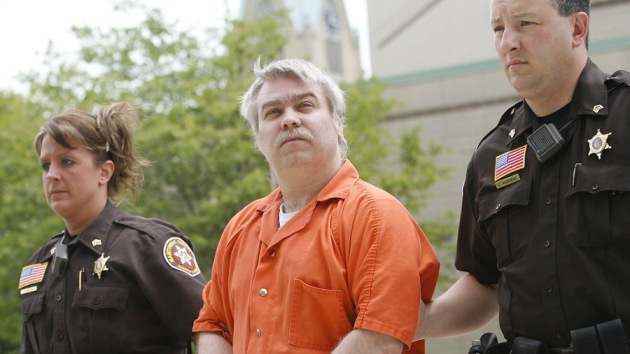‘Making a Murderer’ (2015)
January 9, 2016 1 Comment
 If you’ve got a Netflix account and 10-hours to spare this weekend, I highly recommend checking out “Making a Murderer,” a new documentary series from filmmakers Laura Ricciardi and Moira Demos. The 10-part doc details the stranger-than-fiction story of Steven Avery, a small-town Wisconsin man who served nearly two decades in prison for a crime he did not commit, a crime for which he was exonerated, pardoned and released based on new evidence after 18 years.
If you’ve got a Netflix account and 10-hours to spare this weekend, I highly recommend checking out “Making a Murderer,” a new documentary series from filmmakers Laura Ricciardi and Moira Demos. The 10-part doc details the stranger-than-fiction story of Steven Avery, a small-town Wisconsin man who served nearly two decades in prison for a crime he did not commit, a crime for which he was exonerated, pardoned and released based on new evidence after 18 years.
Two years after being released in 2003, Avery’s newly granted freedom and pending lawsuit against Manitowoc County law enforcement and those responsible for his initial imprisonment were swiftly interrupted when the burned remains of a previously missing woman’s body were found on his property. Avery’s family ran a salvage yard, and the woman’s vehicle was also found among the many junked cars on the property.
The bizarre circumstances (which become stranger and stranger as the story develops) surrounding both crimes, and the unusual relationship between Avery and the county turn this story into a fascinating documentary that is equal parts riveting and infuriating. With shades of Joe Berlinger and Bruce Sinofsky’s documentaries “Brother’s Keeper” and their brilliant “Paradise Lost” trilogy, and more recently Andrew Jarecki’s HBO documentary series “The Jinx,” “Making a Murderer” communicates to us the isolation that comes with living in a place under circumstances where unchecked power and authority can seriously affect that place’s inhabitants.
In the case of “The Jinx,” what was fascinating about Robert Durst was how his affluent upbringing — Durst was in line to inherit his father’s New York real estate dynasty – ultimately left him bankrupt of any morality or sense of reality in terms of living a life outside of that icy cold empire devoid of emotion and surrounded by iron, steel and unreachable expectations. Heavy lies the crown, as it were.
Although similar in nature to what Jarecki was studying in “The Jinx,” in the sense that “Making a Murder” does still examine the isolation and savagery that come with physically inhabiting a certain kind of place, and/or mentally inhabiting a certain state of mind, Ricciardi and Demos take us not to a city, but to a small town where everything operates in somewhat of a vacuum. That can be detrimental to true justice, as we’ve seen in the “Paradise Lost” films and, going just a bit farther back, the witch trials of Salem, MA. It’s an oft-visited analogy, but difficult to argue with when placed in context with the story of the West Memphis Three in “Paradise Lost,” and now Steven Avery in “Making a Murderer,” although in Avery’s case there is far more uncertainty as to his involvement with the victim prior to her death.
After having watched all 10 parts of “Making a Murderer,” I can’t say with any certainty what happened or why. Or who killed the victim, Teresa Halbach. The desperation and apparent obsession that the local law enforcement have with Avery and his family is enraging, however. Similar to the law enforcement officials behind the West Memphis Three case, these guys also have a disgraceful habit of targeting people with low IQs, questioning them in interrogation rooms without a lawyer present, and essentially building cases and ruining people’s lives based on hearsay, fabrications and assumptions.
“Making a Murderer” will most likely make you angry, but it never fails to compellingly tell its story with sharp editing and attention to detail. It’s remarkable amount of attention in the public sphere, as a petition of more than 1,000 signatures asking that Avery be pardoned has been sent to the White House (recent news shows the White House can’t actually pardon someone such as Avery who is charged at the state level and not at the federal level) and social media has exploded with outrage, despair and acclaim for the film itself. For me, the most important thing that Ricciardi and Demos have documented here is the importance of not allowing systems to exist inside of a vacuum — without exposure to different ideas and beliefs, a society can neither breathe nor flourish, and therefore cannot thrive in diversity of thought, perspective and empathy. After watching “Paradise Lost,” I naively said to myself: “This is it — how could it happen again after this kind of exposure?” Little did I know that Avery’s cases were happening simultaneously, and all the way across the country from Arkansas, no less. This kind of corruption is ongoing, and in Avery’s case, things aren’t starting to look any brighter.
“Making a Murderer” is a Netflix original documentary series, and is streaming there now.
★★★1/2 (out of 4)
Great analysis! This case was so disturbing on so many levels! Not sure if Avery was the killer but I feel the police definitely framed him! Possibly framing a guilty man. Law enforcement behavior was so obviously corrupt, I feel at the very least they should have been held accountable in some way! Including the attorneys and judges!